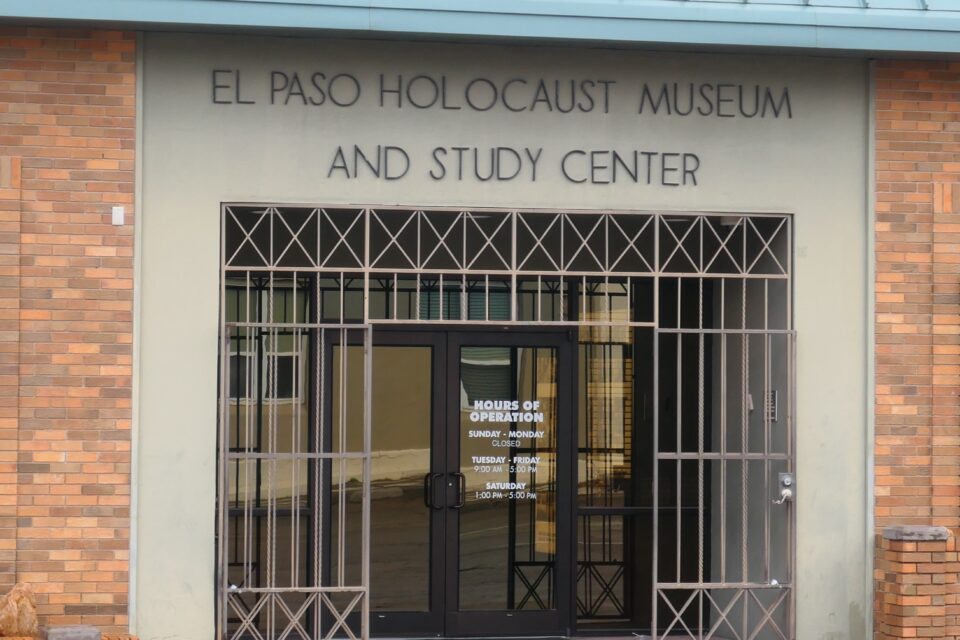FEBRUARY 2-3, 2024: We woke up this morning in an RV park in the middle of El Paso. The city El Paso in the state of Texas lies on the border with Mexico, divided by the Rio Grande River.
In the center of El Paso, is a large mountain, and the city hugs the east, south and western sides of the mountain. Large highways, full of traffic, transverse the city, and especially from the south, you can see Mexico across the border. This is easily discernable by the crowded, hap-hazard small houses on the Mexican side. On the US side, you see lots of shopping opportunities.
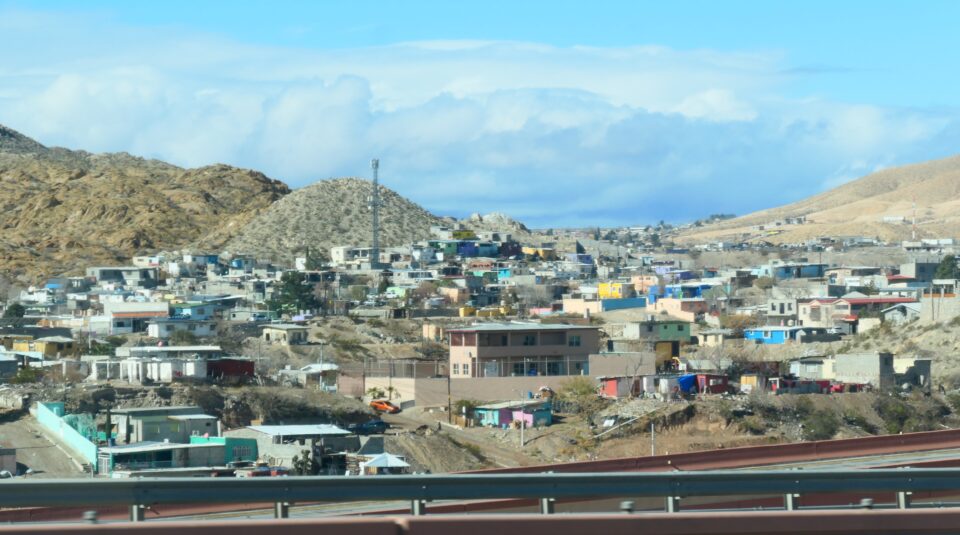
Our first stop this morning was the historic Concordia Cemetery. This resting place was established in 1856 and today has over 66.000 graves. Many pioneers, gunfighters, war veterans, etc. are buried here. It has various sections – Catholic, Masonic, Jewish, Black, Chinese, Military, Jesuit, and so on.
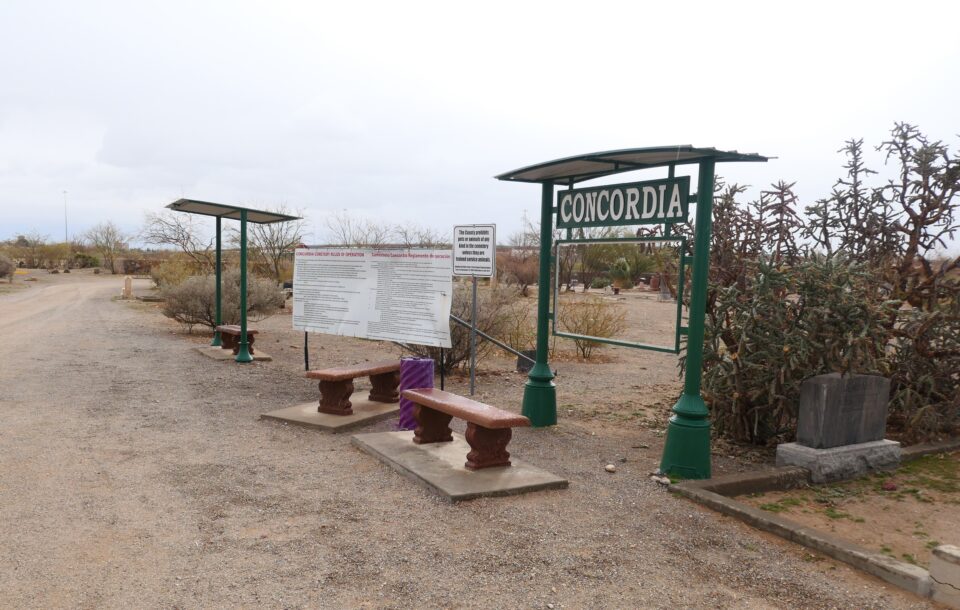
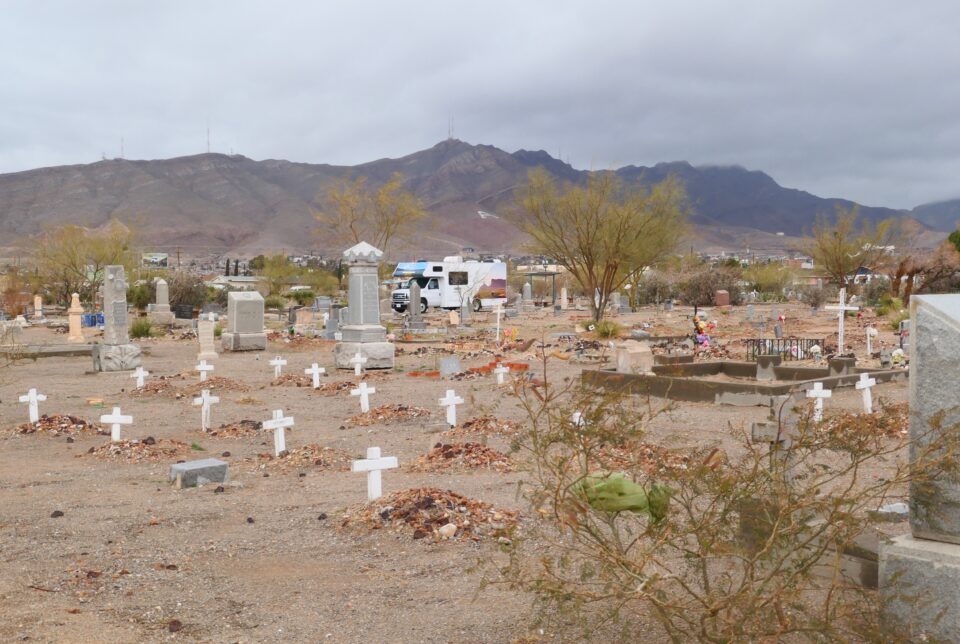
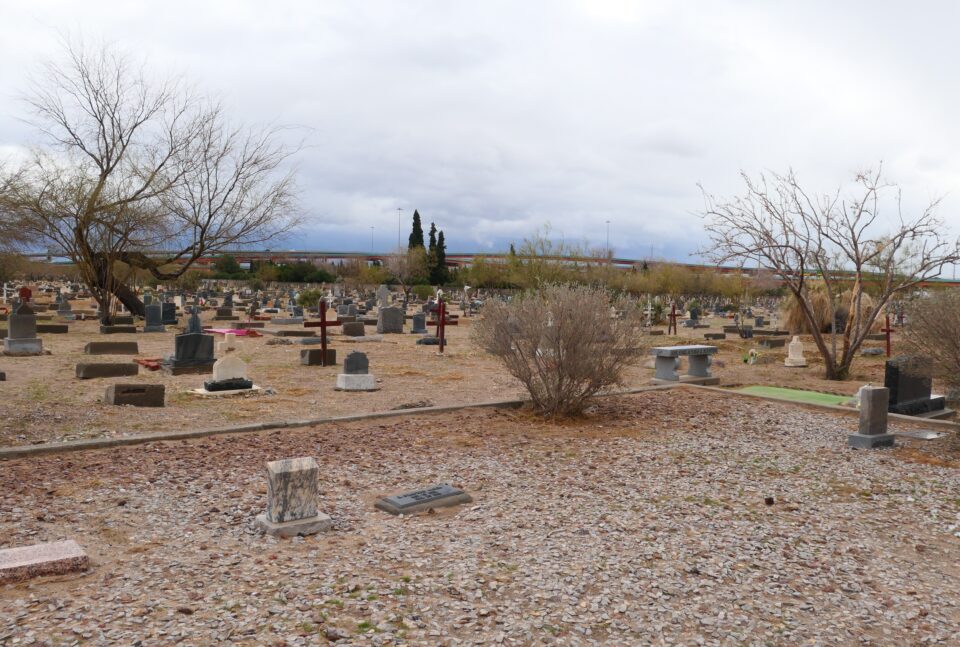
As we drove into the cemetery, Ray, an old Texan who was the cemetery caretaker, came to our motorhome to see why we were there. He gave us a map and pointed us in the right direction to the Jewish section. He also pointed out, which got Mark very excited, that we were now near the grave of John Wesley Hardin, an Old West outlaw immortalized in Bob Dylan’s album and song of the same name. Well, almost the same name – Dylan changed Hardin to Harding. Mark explained to me that Dylan would write about the good in each person, even when they were fugitives. This was certainly the case here. Hardin was a reckless, gunslinging outlaw who left a trail of trouble wherever he went. At the age of 23, he was caught, sentenced for murder, and sent to prison for 25 years. At the time of his sentencing, Hardin claimed to have killed 42 men, although only 27 were verified. Despite all this, Dylan’s lyrics begin:
John Wesley Harding
Was a friend to the poor
He traveled with a gun in every hand
All along this countryside
He opened a many a door
But he was never known
To hurt an honest man
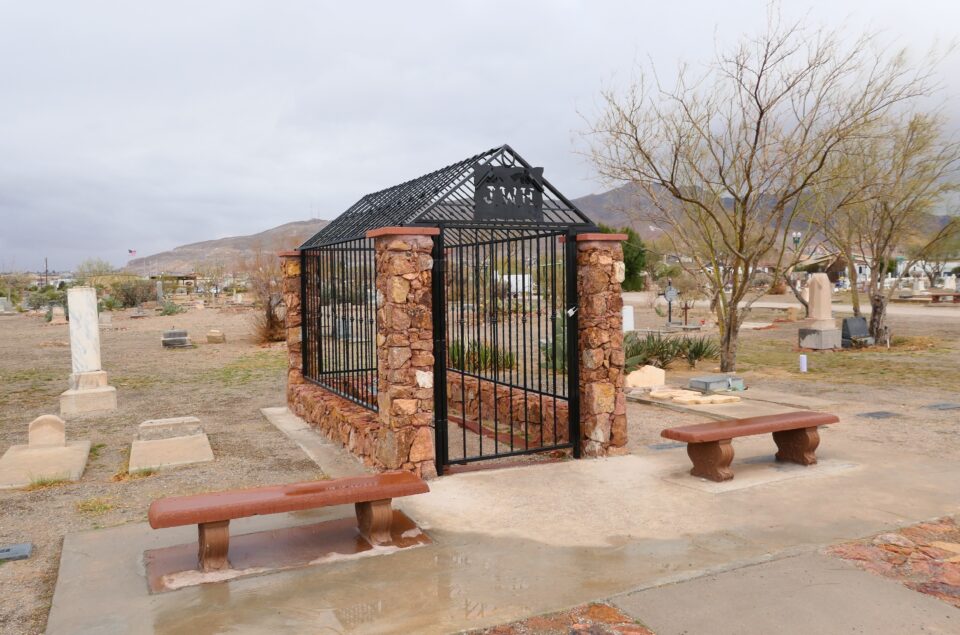

The weather was rainy, cold and windy. Not so pleasant for walking around. The Jewish section is through a different entrance, and we drove to there. There are actually two Jewish sections one next to the other – B’nai Zion and Mt. Sinai, each belonging to a different congregation. Both were very green and manicured – very much in contrast to the other sections of this cemetery. This was unusual – usually it is the other way around with the non-Jewish cemetery much better maintained than the Jewish one. The B’nai Zion section also included a small Holocaust Memorial.
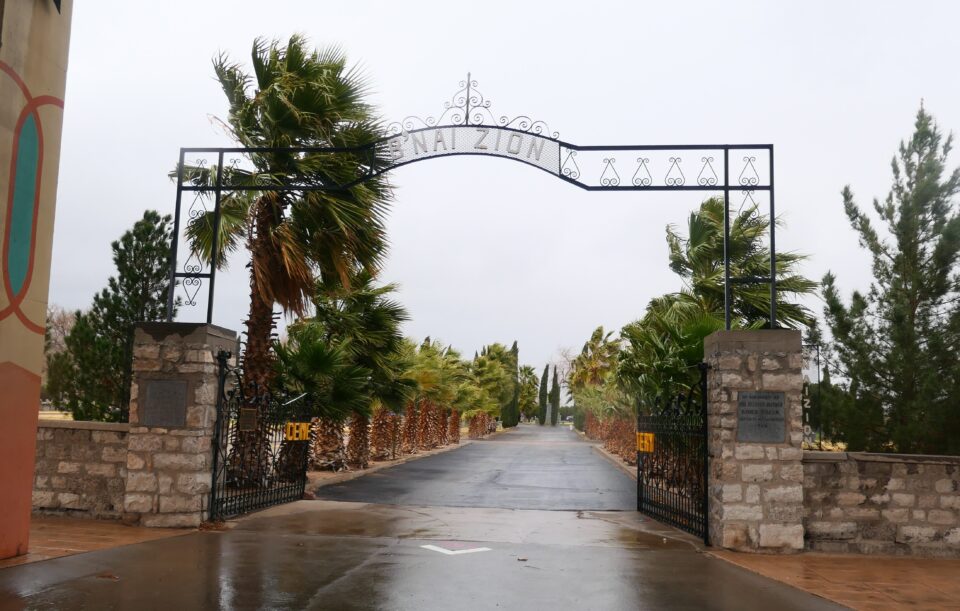
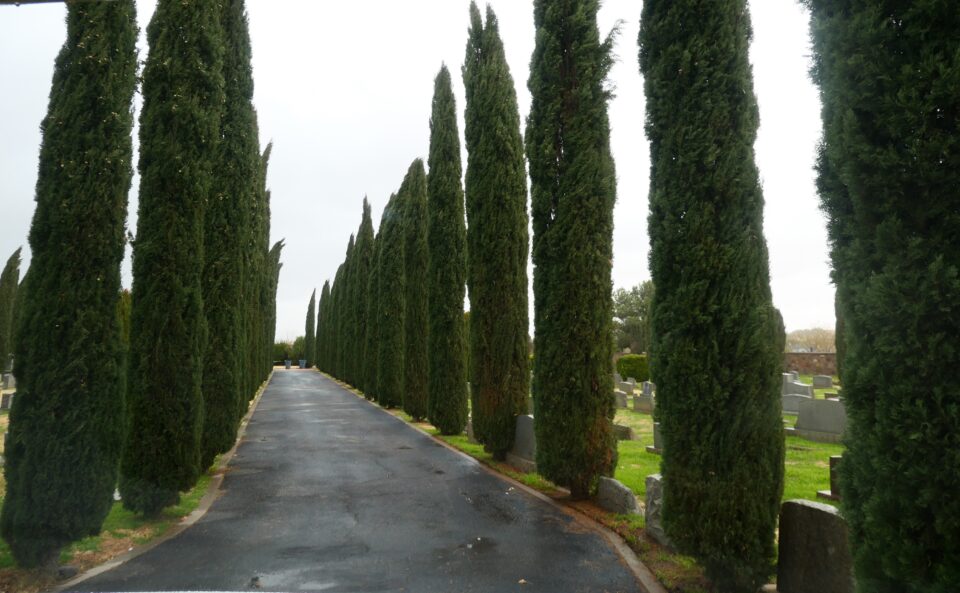
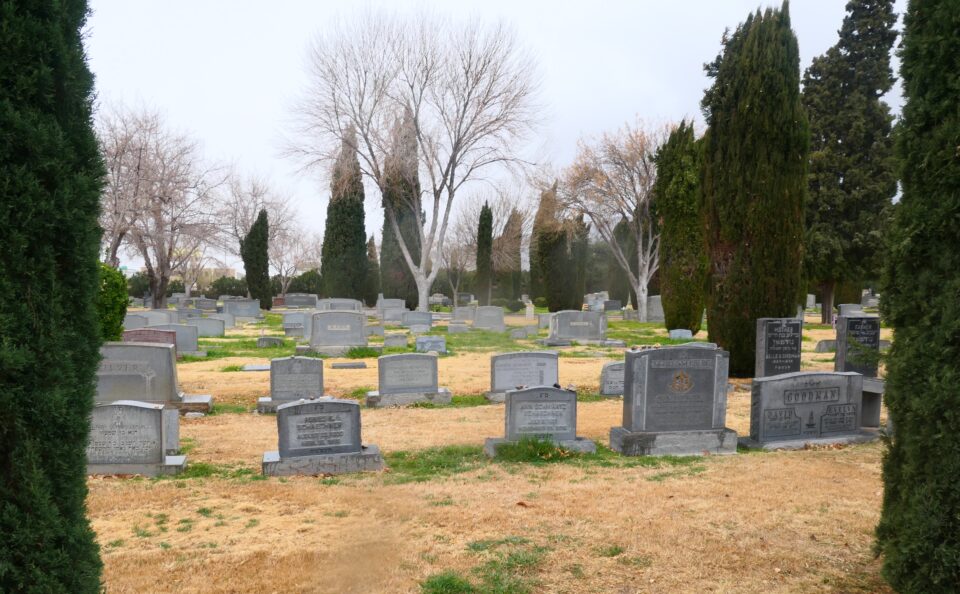
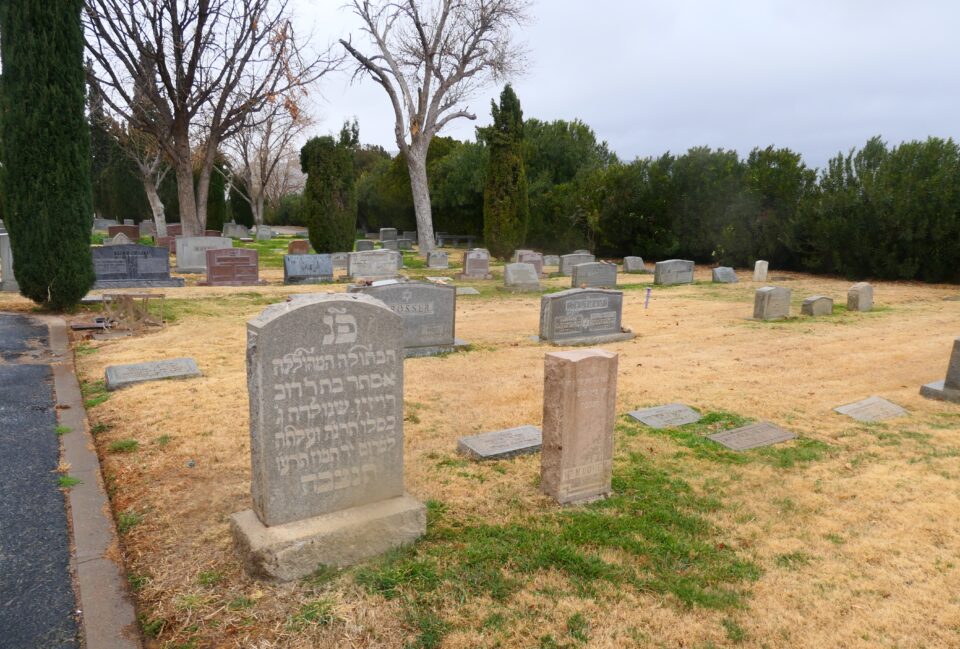
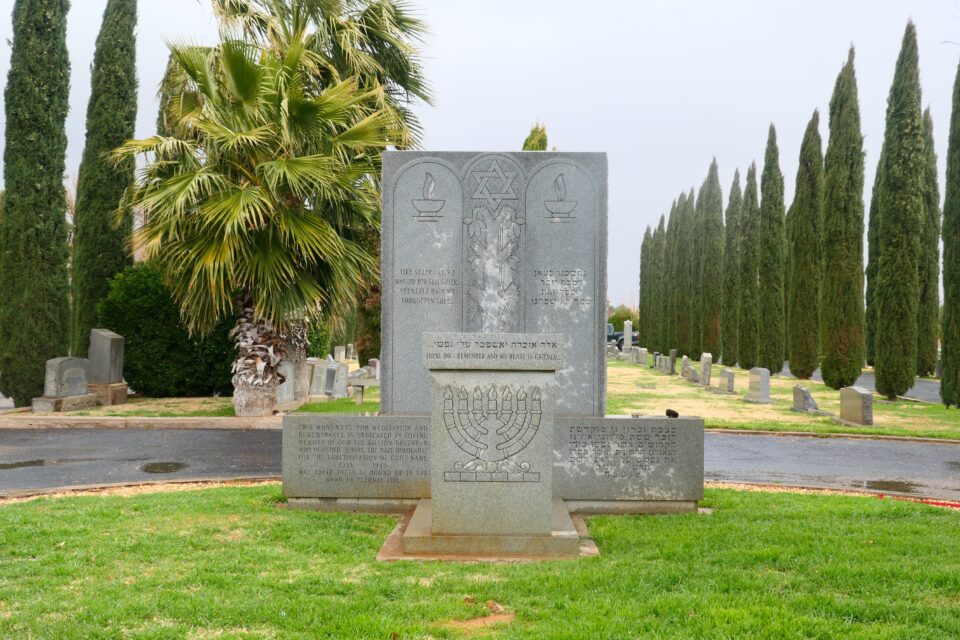
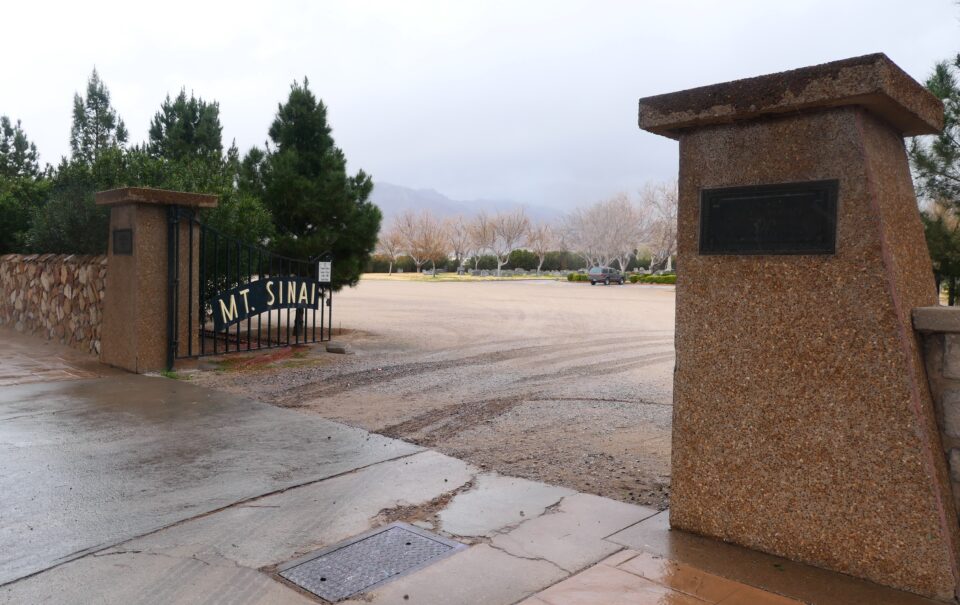
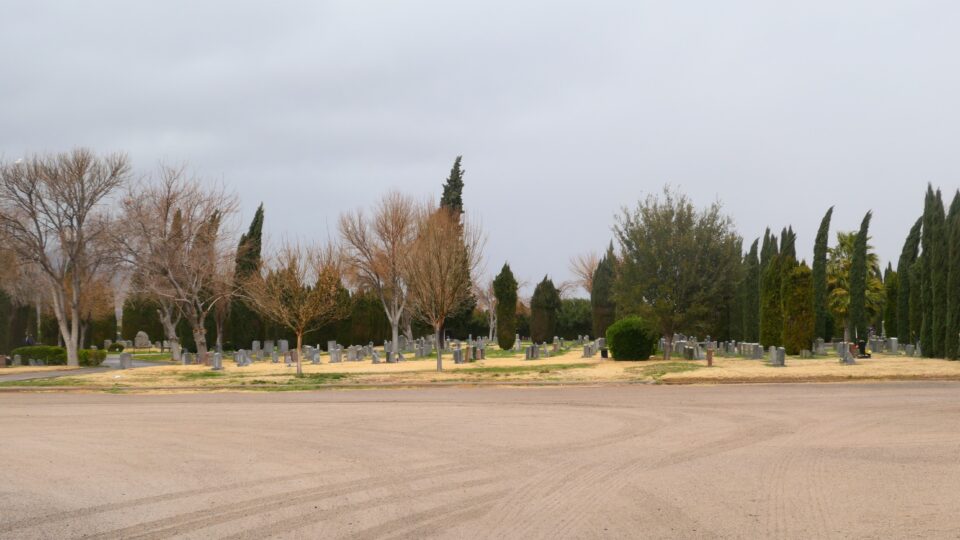
From the cemetery, it was a short drive to the downtown where the El Paso Holocaust Museum is located. It was founded in 1994 by Holocaust survivor Henry Kellen, who lost his family in the Holocaust. The concept of the museum was a series of small rooms, that tell in chronological order the story of the Holocaust. The exhibit starts with a room about life before the Holocaust showing a typical European dining room set with a Shabbat table. A photo of Henry Kellen’s mother decorates the wall. From there was a room about the rise of antisemitism and Kristallnacht. Next you walk through a train car to reach a room about the camps. This is followed by an exhibit about the Righteous Among the Nations, non-Jewish individuals honored for risking their lives to aid Jews during the Holocaust. Henry Kellen survived due to the courage of a Christian Lithuanian family, who hid him and seven other Jews in an earthen hole under the floor of his barn for three months. The next room in the museum is about Liberation, with an emphasis on the role of USA soldiers who participated in liberating the camps. The last room is the personal stories of Holocaust survivors who settled in El Paso after the war. A small museum that tells the story very well.
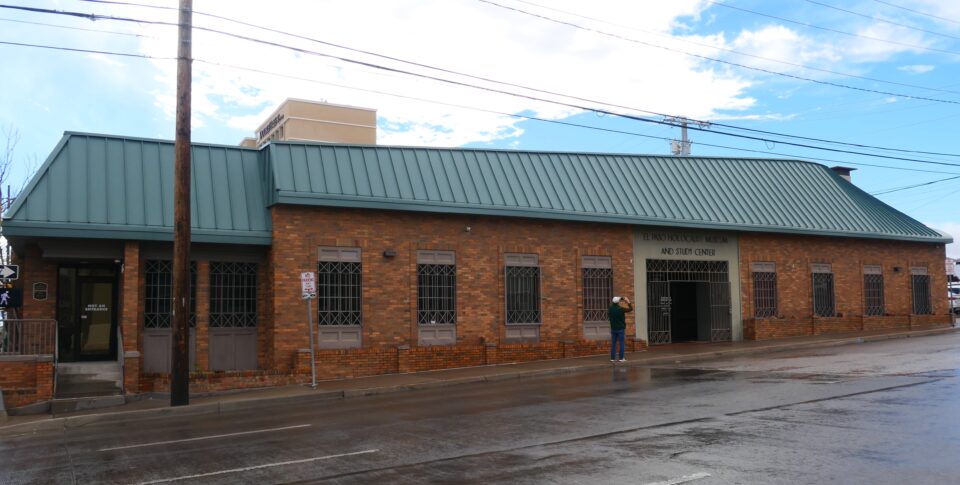
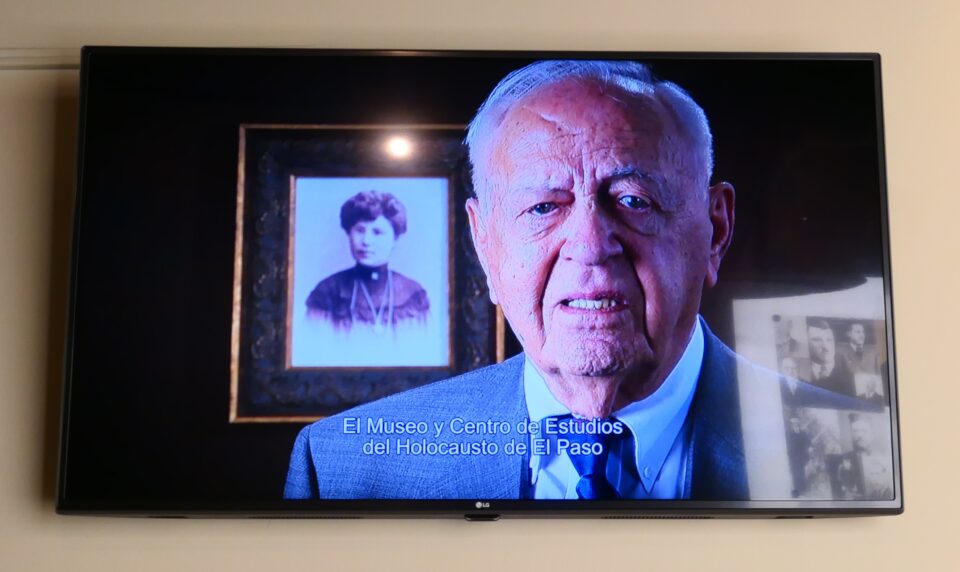
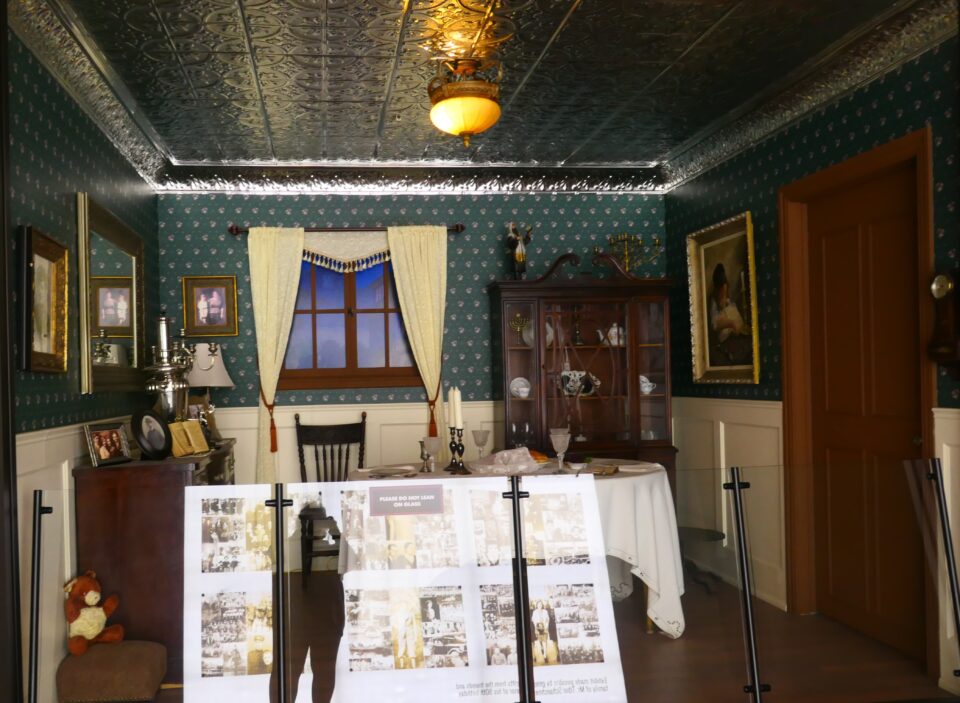
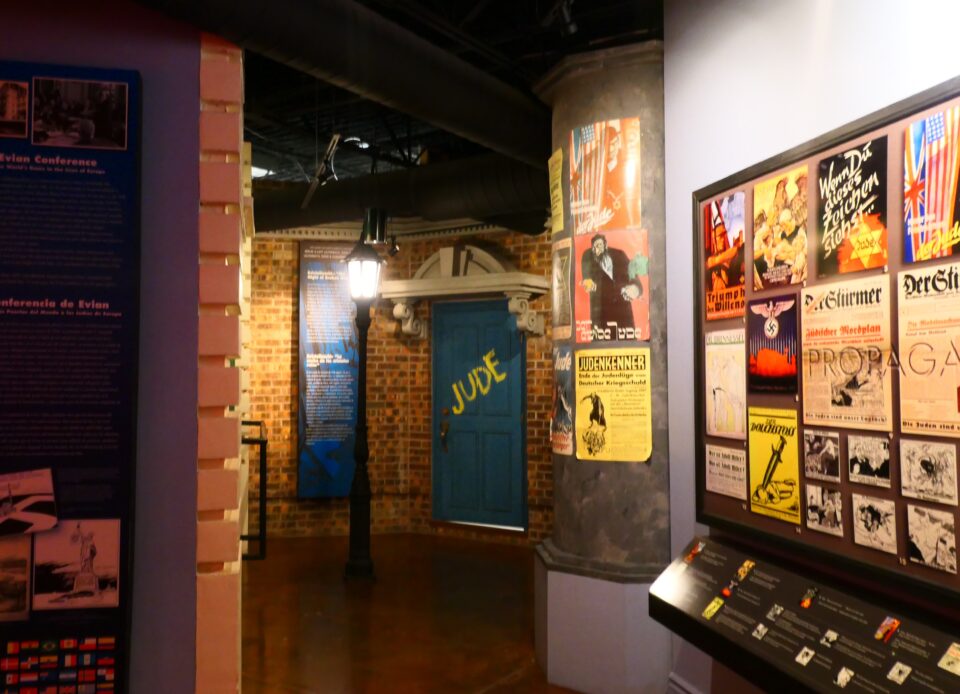
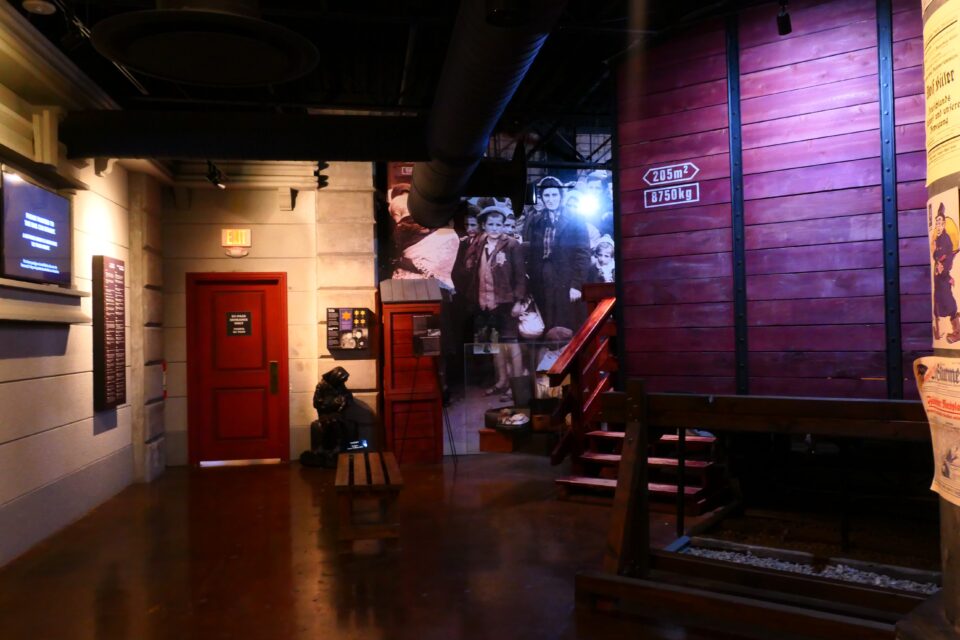



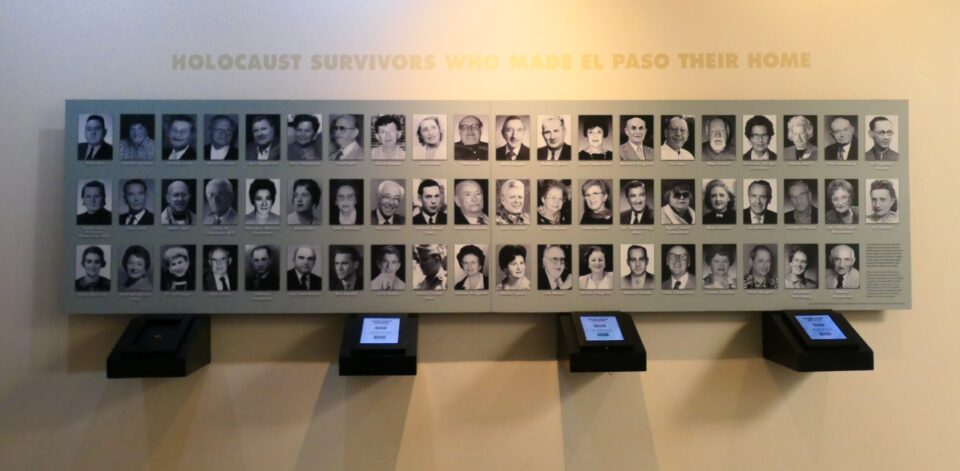
There was a Holocaust Museum in LA, also one in Tucson, and here was another one in El Paso. In addition, in Phoenix they are raising money to build a large Holocaust Education Center. Albuquerque also has one. I was wondering why so many Holocaust museums. Is it really necessary that each community have their own? My doubts about this were answered as we visited this museum in El Paso. While we were there, a group of young adults were on a Spanish-speaking tour. They were very interested and respectful. So yes, for the story of the Holocaust to be known by as many people as possible, it is good to have museums in every locale.
One block away from the museum is the former B’nai Zion synagogue, once home to a conservative congregation that still thrives till today. The building, completed in 1912, was the first Jewish synagogue in El Paso. When the congregation moved to a larger building in 1927, the building housed El Paso’s first Eastern Orthodox Church. Today it is used by El Paso Community College. A historical marker indicating that this was the Old B’nai Zion Synagogue is placed near the front door of the building.

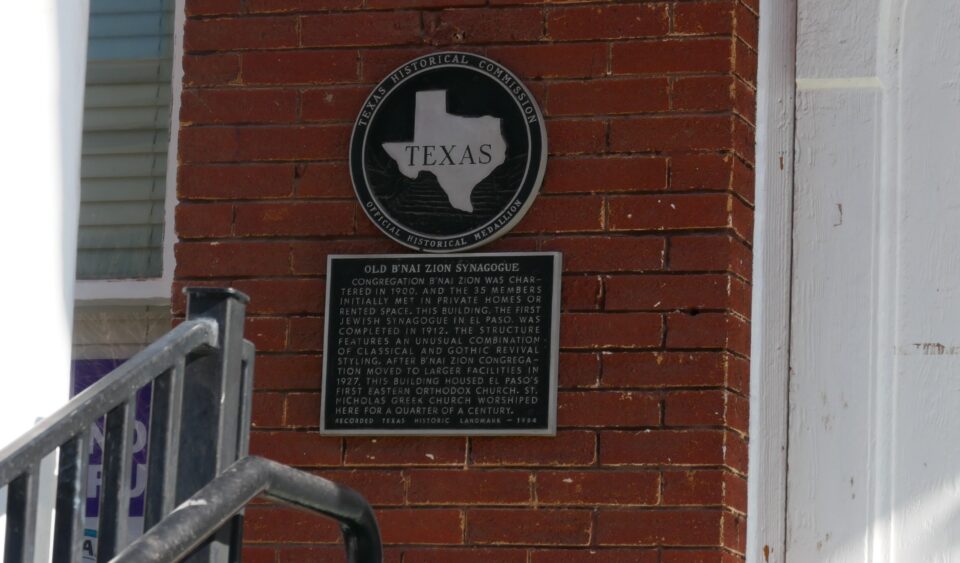
At the cemetery this morning, were two Jewish sections for two congregations – B’nai Zion, who first building we just saw, and Mt Sinai, whose new building we were now going to see.
The current Temple Mount Sinai synagogue in El Paso, was dedicated in 1962, and is an iconic, modernist building designed by noted synagogue architect Sidney Eisenshtat. It sits high on the mountainside, and with its tall, towering ark, is an El Paso landmark.
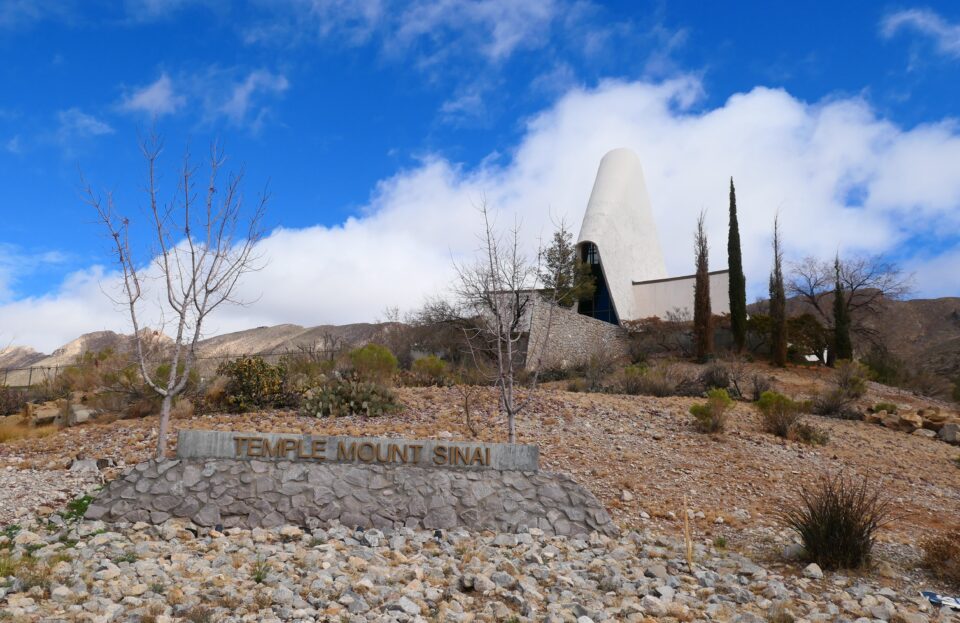
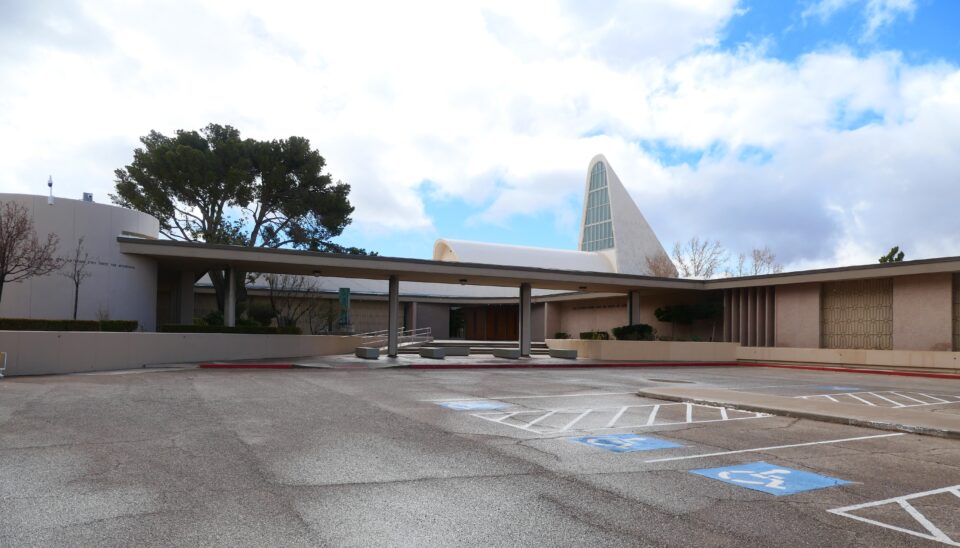
Unfortunately, we were not allowed into the building and were disappointed not to see what supposedly is a spectacular, awe-inspiring interior.
Only after we left El Paso, we learned that the current B’nai Zion Synagogue, dedicated in 1983, is also magnificent. Like Temple Mount Sinai, it is set in the mountainside and was also designed by the same notable architect. Adjacent to the B’nai Zion Synagogue are two unique gardens – one is a living garden in the shape of Israel, and the other is a desert garden for relaxation and contemplation with trees planted to honor individuals and events. Sorry we missed going there.
As the day wore on, the weather got better. The sun came out and the rain disappeared.
As I mentioned earlier, the city El Paso is built around a mountain. We still had some time before Shabbat and decided to drive over and through the mountain pass that connects east and west El Paso. Along the road were viewpoints that gave spectacular views of the city below.
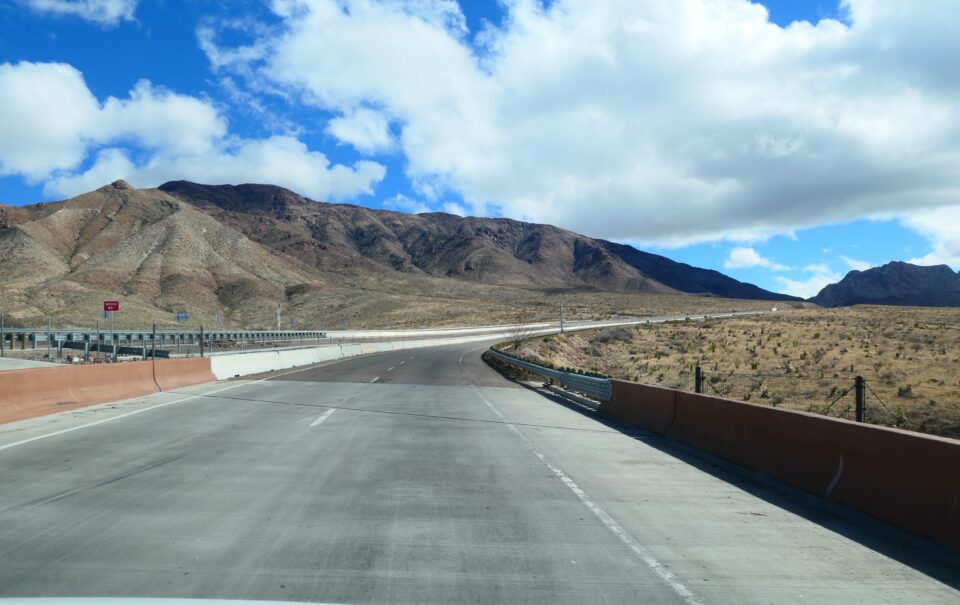
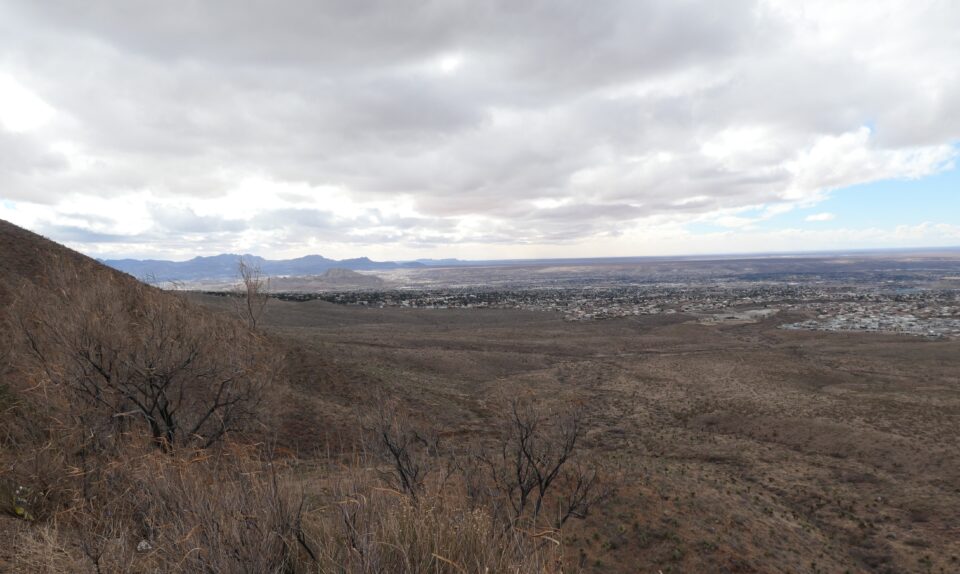
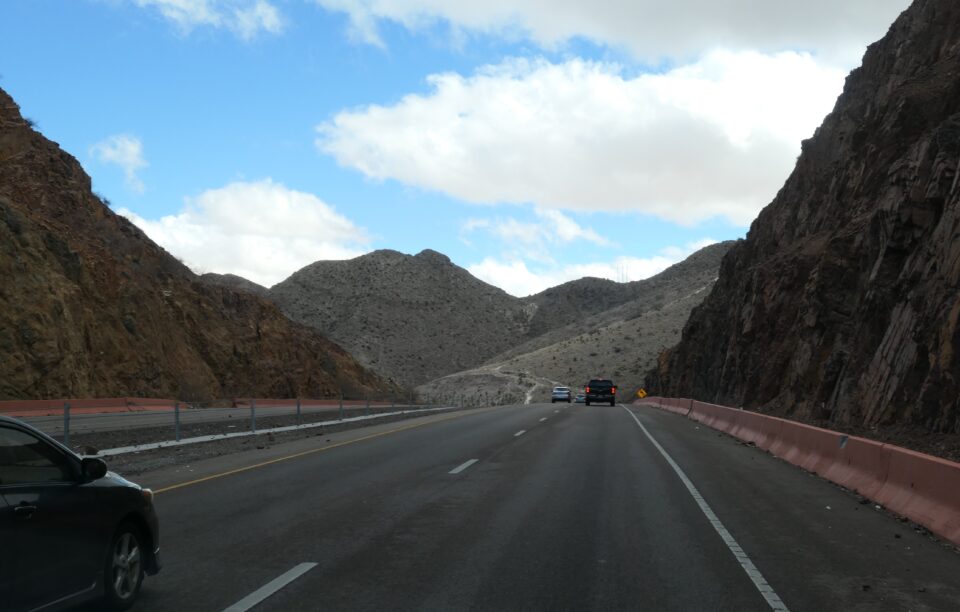
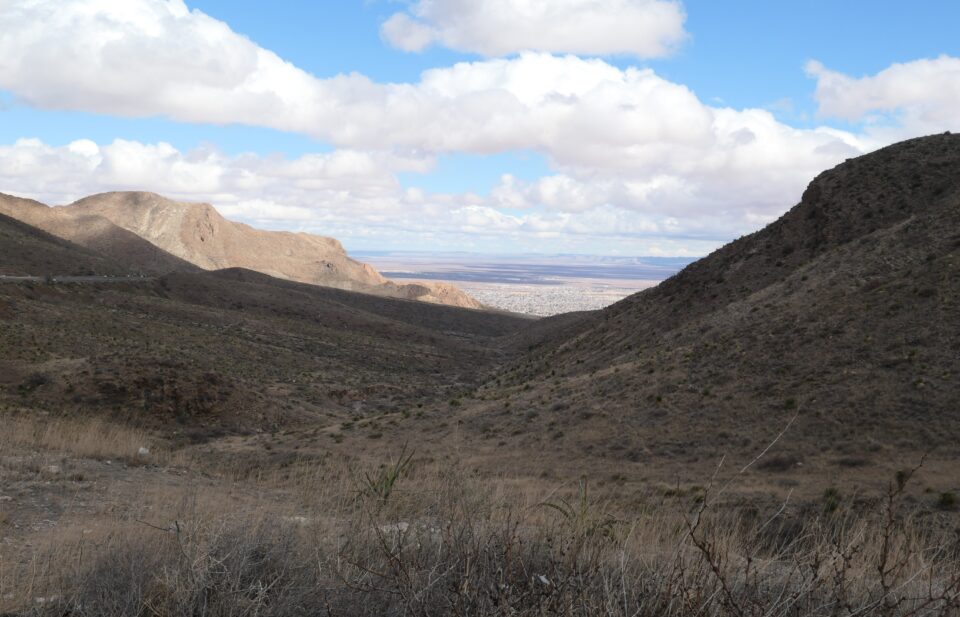
We did some last-minute Shabbat shopping at Walmarts (they have a surprisingly large selection of kosher baked goods) and then returned over the mountain pass. On the way back, we passed the National Border Guard Museum whose exhibits tell the history of the United States Border patrol. Would have liked to see that if we had had more time.
Our next stop was the home of the daughter-in-law of the Chabad rabbi, who bakes and sells challot for Shabbat. These turned out to be unique and delicious, not sweet, but rather with a coating of sesame seeds and garlic on top. Rain started falling again.
El Paso Chabad recently built a new building and in front of their old building is a small parking lot. This is where we would stay for Shabbat. Just as we parked the motorhome, the Chabad rabbi came to say hello, the sun came out and a beautiful rainbow lit the sky. Was this a sign that we were in a good place for Shabbat?

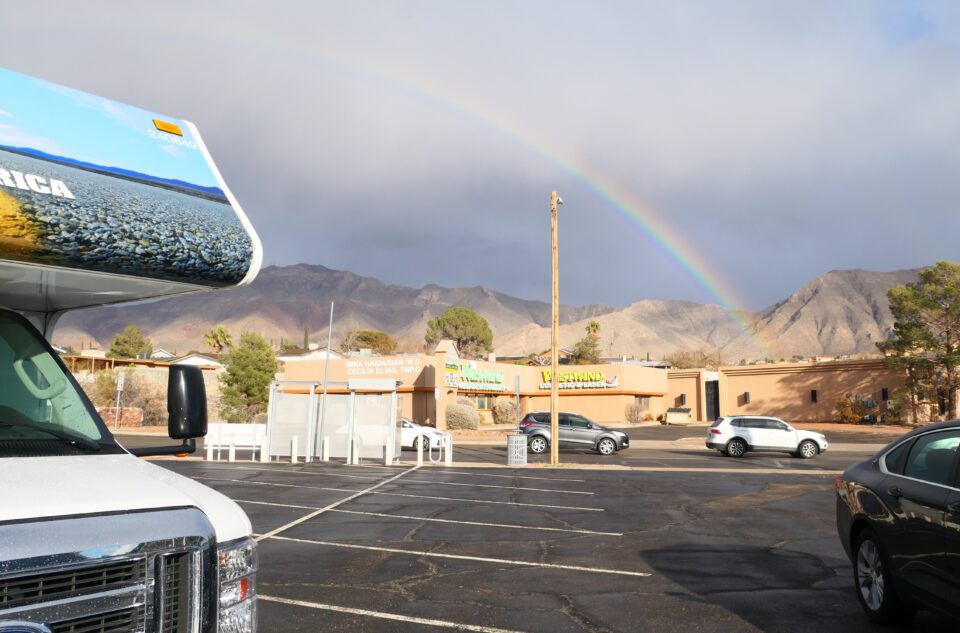
The new Chabad building was right around the corner and Mark went there for Friday night services. They have a large synagogue, but on this Shabbat they did not get a minyan. For Shabbat morning services there were about 30 people there, and afterwards everyone was invited to a large kiddush, which included a vegan cholent that made Mark happy.
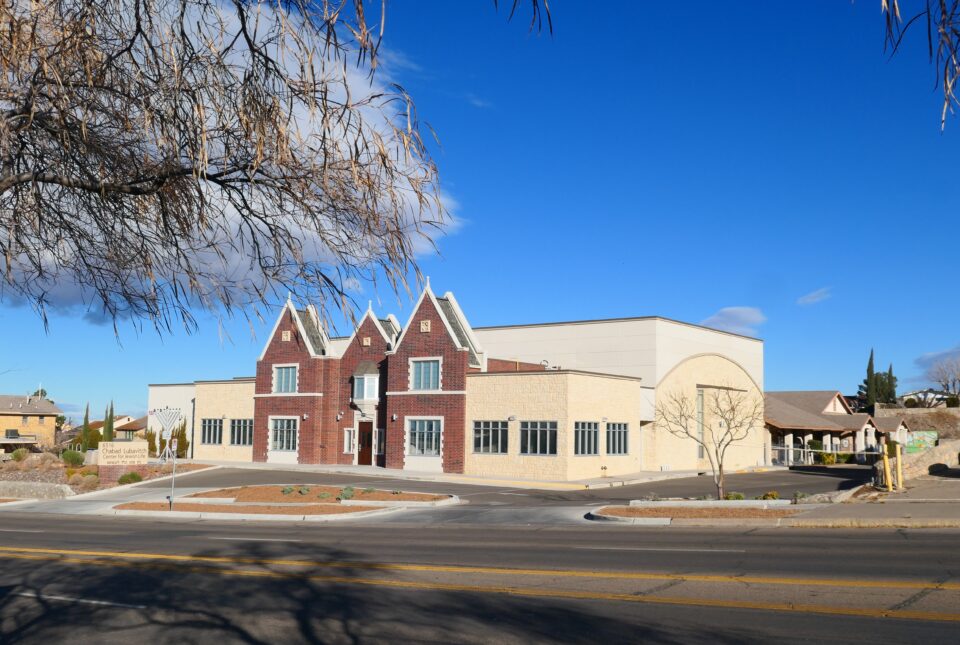

It was the birthday of one of the congregants, and he spoke at kiddush about how much this congregation means to him and has enriched his life in his old age. If I had been wondering why they need a Chabad here when hardly anyone comes to this synagogue, I now understood – whoever saves one life saves the world.
On one of the walls inside the Chabad building was a framed document that the Texas legislature declares April 16, 2019 Education and Sharing Day to celebrate the hard work, service, and commitment to learning of Rabbi Menachem Mendel Schneerson, the Lubavitcher Rebbe. Turns out, this is not only in Texas, but a day established by the United States Congress. Since 1978, each year, the president has proclaimed the Rebbe’s birthday – 11 Nissan according to the Jewish calendar, to be Education and Sharing Day. This needs to be redeclared every year, since the Hebrew date falls on different days in the Gregorian calendar.
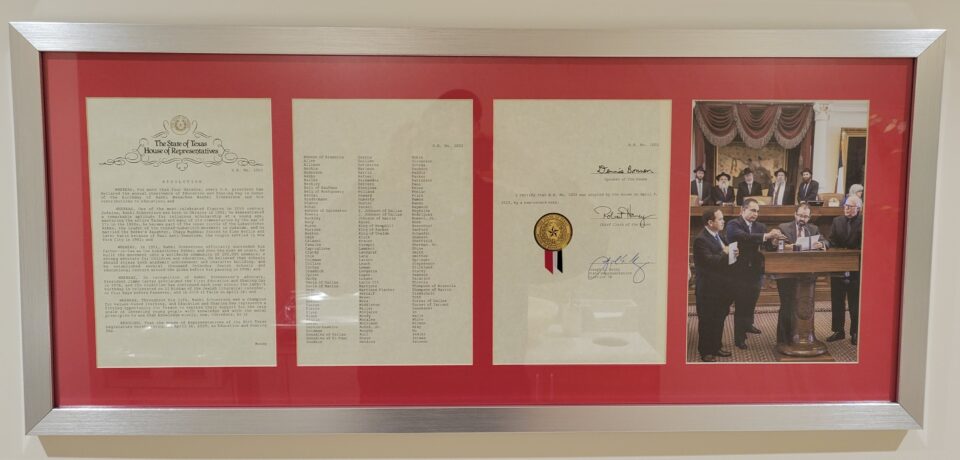
We learned a few lessons by spending Shabbat in a motorhome in a parking lot without the ability to hook-up to electricity. Basically – never do it again. Without electricity we did not have a furnace, and it was too cold without heating. At night the temperature went down to 1 degree Celsius (33 degrees Fahrenheit). In the past, when we were younger, the campsites we enjoyed the most were in the middle of nowhere without any amenities, but now KOA campgrounds with their cement RV parking lots offering electricity, water and sewage hook-ups are looking better and better. Also in the past, when we did our family motorhome trips in the 90s, we did not have computers and cellphones. Now electricity for electronic devices and internet connectivity has become more important.
Thus, most of my Shabbat was spent under a down blanket reading a book, while trying to stay warm. Usually I read on the Kindle, and do not have a book with me. Luckily, when we visited my aunt last week, she gave me a copy of the latest book she had written – Caregiver by Yael Remen. Recommended. It kept me enthralled for the whole Shabbat.
Once Shabbat was over, we drove in the dark to a campground in Anthony, about ½ hour north of El Paso. There we had full hookups – water, electricity, and sewage – and finally some heat. Tomorrow, we continue our way northward.
